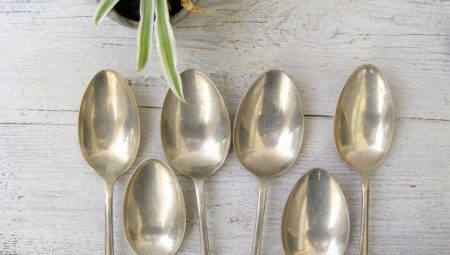Demand for spectacular cutlery is always high, despite the fashion, this gift was always considered status. Whatever lifestyle the family leads, a beautifully served table will decorate any holiday. Depending on the budget and taste, devices made of silver, cupronickel or nickel silver are purchased.
Outwardly, they differ little from silver and are also not easy to care for. Especially common are sets of tablespoons of this alloy.
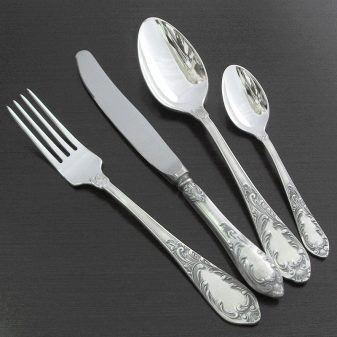
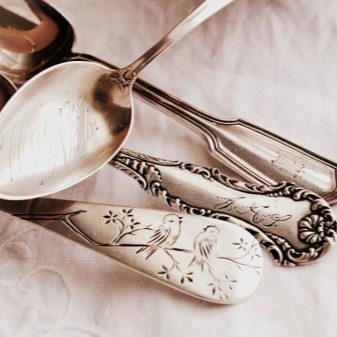
What is cupronickel?
Cupronickel today is not as popular as it was 50 years ago, this alloy is used in the manufacture of not only dishes, but also jewelry. Due to its resistance to corrosion and external resemblance to silver, nickel silver ware was very common at the time. The composition of the alloy consists of the following elements:
- not less than 70% copper;
- no more than 30% nickel;
- about 1% manganese and iron.
Earlier zinc was still included in it, but today a material with such a composition is called nickel silver, where cheap zinc partially replaces expensive nickel. Cupronickel badly transfers moisture, has low thermal conductivity.
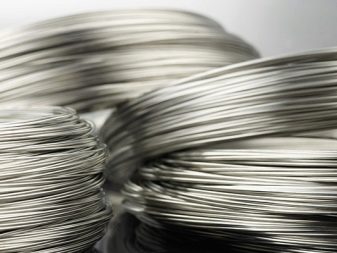

The benefits and harms of cutlery
Tea and table sets made of nickel silver were very common in the USSR. There were several factories producing similar products. No one thought about the benefits and harms of these cutlery. However, since there are several different metals in the composition, it is not surprising that their regular use leads to health effects. There is an opinion that, if used incorrectly, cupronickel adversely affects health.
Among the advantages of such dishes, we can safely distinguish:
- durability, strength;
- budget price;
- beautiful and status appearance;
- not subject to corrosion;
- heats up slowly, so it is convenient to use.

There are also disadvantages to devices from cupronickel:
- darken and require careful care;
- if the devices are devoid of coating, they can give away metal in the aftertaste;
- cannot be used in cooking.
As for health, it is possible to harm the body only using cupronickel products for cooking. During heating, the oxidation of copper releases certain toxins in contact with various products. Therefore, it is impossible to cook food in the oven or on the stove in cupronickel dishes. The health benefits of using cupronickel spoons are regularly apparent. A small number of metal molecules do not fight bacteria like silver, but the body needs it. To increase the ingestion of substances such as iron, nickel, copper, it is enough to constantly eat food with cupronickel spoons and forks.
The amount of these substances is microscopic, but has a beneficial effect on health.
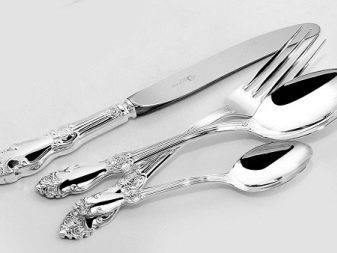

Marking
Gold and silver utensils are not only extremely expensive, but also fragile. Tea and cutlery made of alloys are more durable and no less beautiful. Spoons, forks, knives and other devices have a stamp, a stamp in the form of an inscription that indicate certain information. Most often these are letters in the form of abbreviations and numbers. Items made in the USSR and Russia have the following markings:
- ISC - decoding means a nickel-silver composition that is an analogue of cupronickel;
- if written MELCH, MN - it means that you have tea or tableware made of cupronickel;
- STAINLESS on a spoon - implies stainless steel;
- AL - aluminum.
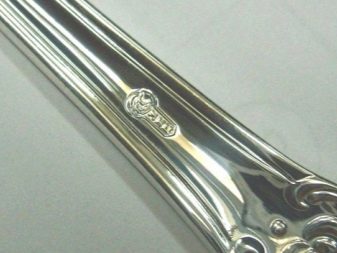
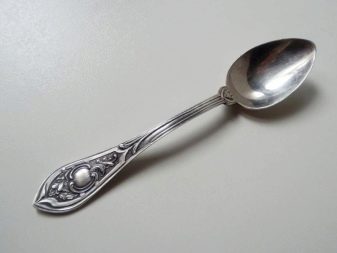
In addition, when silvering or gilding, additional markings with the sign of the corresponding metal are also assigned. The ISC marking is used in the manufacture of not only cutlery, but also jewelry, equipment, and fittings. It stands for copper, nickel, zinc. The nickel silver is coated with silver, so that there is no smack or smell of metal. Soviet GOST requires the following proportionality of the components of the ISC alloy for cutlery and tea devices;
- copper from 60%;
- nickel from 13%;
- zinc from 18%.
The inscription ISC 15-20 means precisely the percentage ratio - 15% nickel and 20% zinc, the amount of copper in this way is not a problem to calculate. According to GOST, the coating thickness is determined - 24 mm for forks, spoons, tongs, tureens, trays and dishes, 18 mm - for the cup holder.
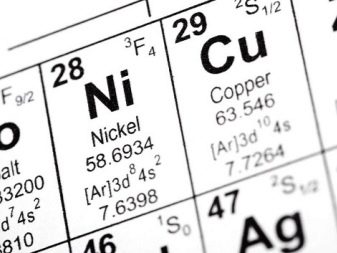

Often you can see the markings ZiD and ZiSh on vintage cutlery, this is the designation of the place of manufacture of sets:
- ZiD - them. Dzerzhinsky;
- Zish - plant them. Shevchenko (there are records in Ukrainian).
If there is an ISTC marking on the spoon, the second TS is nothing more than a price designation, which was previously obligatory affixed to products of any kind. In the 90s, this inclusion was canceled.
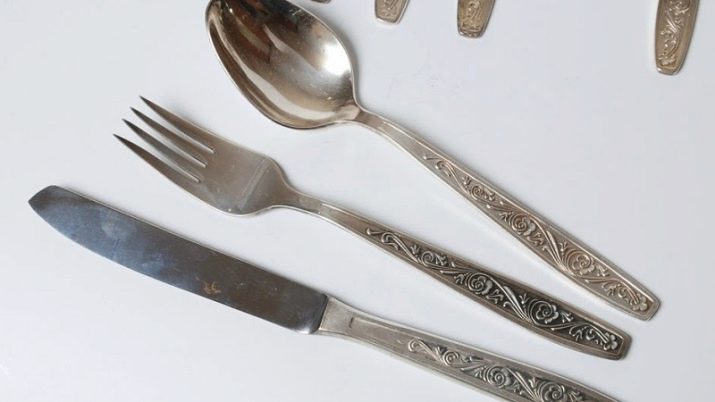
How to distinguish from silver?
First of all, silver is a pure metal, does not contain any impurities, cupronickel is an alloy that has greater strength. Outwardly, they are very similar, so distinguishing them is not easy. First of all, you need to properly consider the spoon.
The main differences:
- silver is obviously heavier than cupronickel;
- reflects light well;
- as time passes it becomes dull;
- conducts electricity and heat better, heats up faster;
- silver is more expensive;
- the brand of the product, if it is genuine, on silver is a test, on cupronickel - letters.
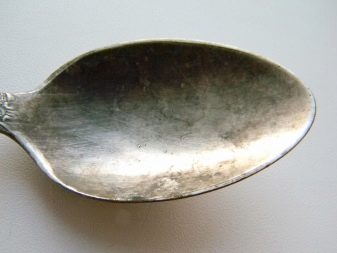
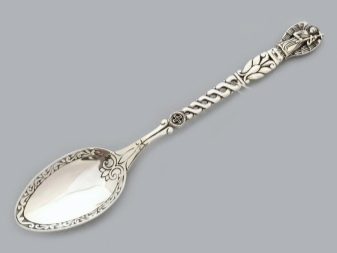
If in doubt, dip a spoon in iodine, in water, or rub with a lap pencil. Any color changes prove that you have an alloy. The smell of metal also indicates the presence of an alloy, since silver has no smell, rub the product well enough to feel the aroma. You can hold the product with a needle, if there is a scratch, this is an alloy.
If you are not sure, show the spoon to the jeweler.Chrompeak, which drips onto an object, will help determine the composition most precisely - a silver product is painted red.
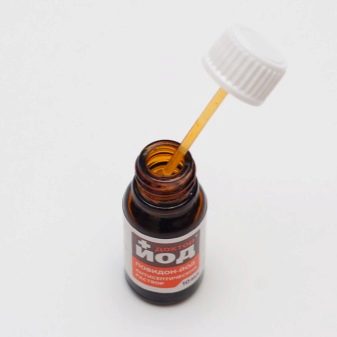

Storage and care
Caring for cupronickel spoons is quite difficult, especially since cupronickel often darkens. In order to prevent this from happening, you need to properly care for the cutlery. If they blacken, you should not despair, you can restore them to their original state on their own.
There are many reasons for darkening, the type of product and how it is stored is important. Main reasons:
- high humidity is a real misfortune of cupronickel spoons, therefore they are stored in dry places, and after washing they are thoroughly wiped;
- improper care, as food, substances that change the appearance of the device over time can get into tiny cracks.
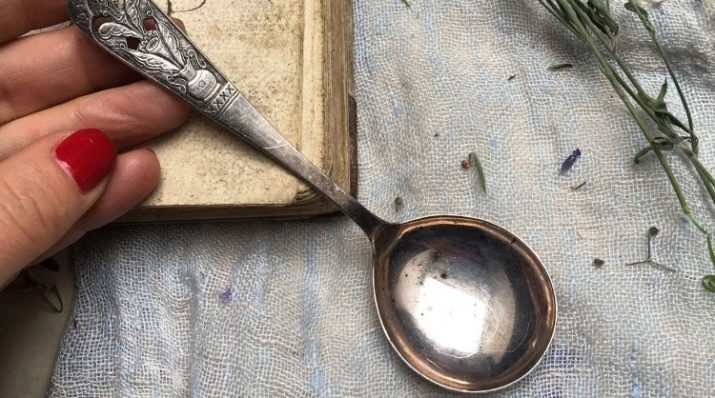
For cleaning darkened spoons from cupronickel, various means and methods are used. They are perfect for regular cleansing, as well as for old spots.
- Foil. Most often used in conjunction with salt and soda. Foil is laid on the bottom of the container, on which the items that need cleaning are located. They are poured with soda-saline and sent to the fire for about 15-20 minutes. After that, the fire is turned off, and the products are left in water until they cool completely, then they are thoroughly washed and wiped dry with a soft cloth
- Special means. They can be purchased in the economic departments of supermarkets, they are convenient to use, are available in different types: gel, powder, solution. It is most convenient to use liquid type products and special wipes. They are excellent at cleaning abrasive substances, but they can damage a set of tablespoons. It is recommended to purchase products that envelop the device after use, protecting it from moisture.
- Soda and vinegar. This is one of the most budgetary ways, especially since both products are available in almost any kitchen. About 50 g of soda is dissolved in a liter of water, if you use vinegar - 1 teaspoon per 200 ml. Then this mixture is rubbed with a cloth, rinsed, wiped dry.
- Decoctions. The most popular decoctions for peeling cupronickel are potato, garlic, and shell. The shell of two eggs is placed in water (1 liter) and brought to a boil, a darkened product is lowered there. After a few minutes, they get out and washed, wiped. Potato broth is considered a little less aggressive, it is better suited for periodic cleaning.
- Ammonia. 4 tablespoons of alcohol are added per liter of water, and with this composition products are washed even with very serious impurities.
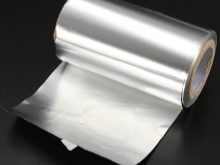
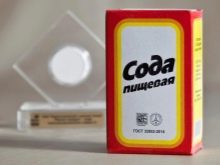
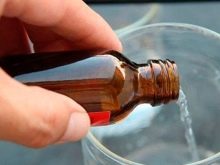
Often, after procedures, spoons from cupronickel fade to restore the lost luster, using a variety of methods:
- toothpaste or powder - products are simply rubbed with a product applied to a cotton pad;
- potatoes - you need half of the raw root vegetables, which are used to wipe cutlery;
- pasta - place the appliances in a pan with boiled pasta for 20 minutes, leave the water in the pan, then wash and dry, and discard the pasta.
In order for cupronickel spoons to retain their original appearance for a long time and not often require cleaning, the following rules must be observed:
- do not store the devices in places with high humidity in a closed box, it is better to wrap each of them with food-grade film;
- Do not use aggressive chlorine care products, such as White;
- wash cupronickel appliances only by hand; they cannot be washed in the dishwasher.


For how easy it is to clean cupronickel in two minutes, see the next video.
